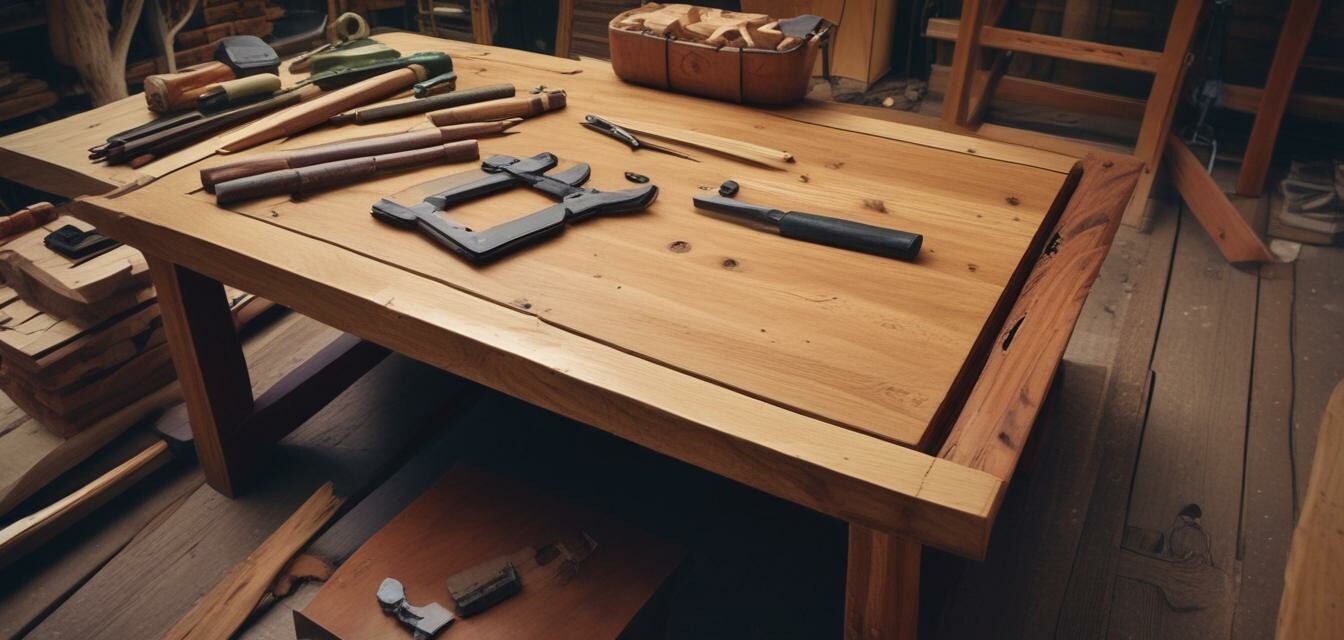
DIY Tips for Sustainable Woodworking Projects
Key Takeaways
- Use reclaimed wood to minimize environmental impact.
- Choose eco-friendly finishes to protect your projects.
- Learn basic woodworking techniques for successful DIY projects.
- Invest in quality tools that last longer and reduce waste.
- Maintain your wooden products to extend their life.
Embarking on sustainable woodworking projects can be both rewarding and beneficial for the environment. With a few DIY tips, you can create beautiful items that not only serve a purpose but also align with your values of sustainability. This guide provides beginner-friendly advice to help you get started on your next woodworking project while being kind to Mother Earth.
1. Start with reclaimed wood
Reclaimed wood is a fantastic choice for DIY projects, as it reduces the demand for new timber and helps preserve forests. Here are some options to source reclaimed wood:
- Salvage yards
- Old furniture
- Construction site discards
- Local classifieds or online marketplaces
2. Choose eco-friendly finishes
Finishing your woodworking project is essential for protection and aesthetic appeal. However, traditional finishes can contain harmful chemicals. Opt for eco-friendly alternatives, such as:
- Natural oils (e.g., linseed or tung oil)
- Beeswax
- Water-based finishes
Benefits of eco-friendly finishes:
| Benefit | Description |
|---|---|
| Non-toxic | Safe for your home and environment. |
| Biodegradable | Breaks down naturally without harming nature. |
| Durable | Long-lasting protection for your wooden items. |
3. Learn essential woodworking techniques
Building your skills in woodworking will help ensure your projects stand the test of time. Start with the following basic techniques:
- Measuring and marking accurately
- Using a saw effectively
- Drilling properly
- Assembling joints securely
Consider taking a class or watching online tutorials to learn these techniques. This knowledge will empower you to create more complex projects in the future.
4. Invest in quality tools
Quality tools not only make your work easier but also last longer, reducing waste over time. Choose the following essential tools for your woodworking projects:
- Table saw: Versatile and accurate for cutting wood.
- Router: Great for edges and shaping wood.
- Drill and drill bits: For accurate holes in your projects.
- Hand tools: Consider chisels and hand saws for finer details.
Pros
- High-quality tools enhance precision and results.
- Durables tools can withstand multiple projects.
- Investing in tools is cost-effective over time.
Cons
- Initial investment can be significant.
- Requires storage space for tools.
5. Maintain your wooden products
To ensure your woodworking projects last, regular maintenance is crucial. Here are some tips for upkeep:
- Clean surfaces with a damp cloth regularly.
- Reapply finishes when necessary.
- Keep items away from direct sunlight to prevent warping.
- Store items in a climate-controlled environment.
6. Explore sustainable practices in woodworking
Understanding sustainable practices can broaden your woodworking skills and help you make informed choices. You can learn more about eco-friendly methods in our articles on sustainable practices. Delve into topics like the benefits of reclaimed wood and tips on maintaining the longevity of your wooden items.
| Aspect | Reclaimed Wood | New Timber |
|---|---|---|
| Environmental Impact | Low | High |
| Cost | Variable | Fixed |
| Availability | Limited | Readily available |
In conclusion, sustainable woodworking projects are not only visually appealing but also contribute to environmental preservation. By following these tips—using reclaimed wood, selecting eco-friendly finishes, learning essential techniques, investing in quality tools, and maintaining your creations—you can embark on a rewarding DIY journey that celebrates craftsmanship and sustainability.
Ready to start your woodworking adventure? Check out more helpful guides on our buying guides page for all your woodworking needs.